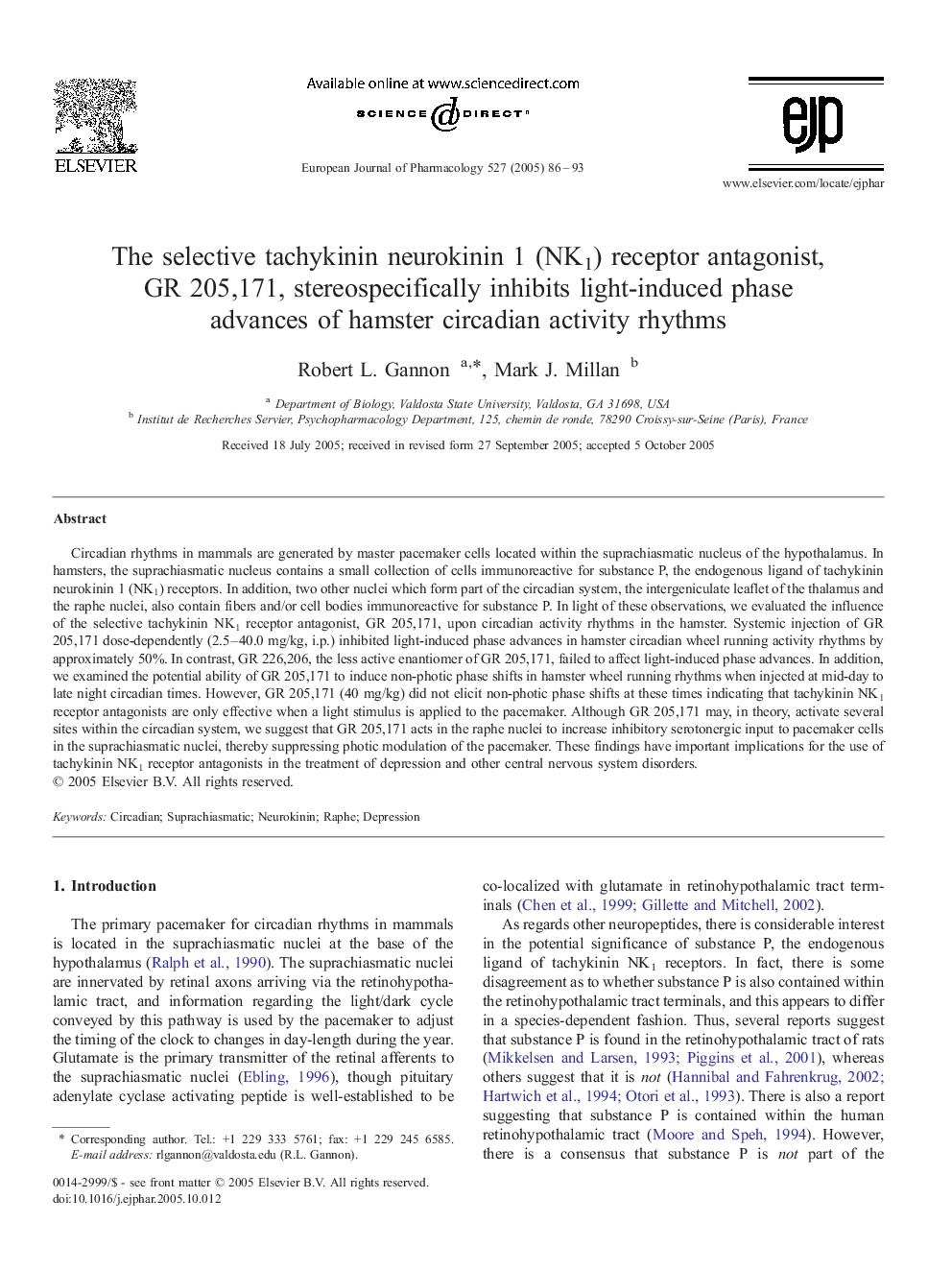| کد مقاله | کد نشریه | سال انتشار | مقاله انگلیسی | نسخه تمام متن |
|---|---|---|---|---|
| 9920937 | 1559195 | 2005 | 8 صفحه PDF | دانلود رایگان |
عنوان انگلیسی مقاله ISI
The selective tachykinin neurokinin 1 (NK1) receptor antagonist, GR 205,171, stereospecifically inhibits light-induced phase advances of hamster circadian activity rhythms
دانلود مقاله + سفارش ترجمه
دانلود مقاله ISI انگلیسی
رایگان برای ایرانیان
کلمات کلیدی
موضوعات مرتبط
علوم زیستی و بیوفناوری
علم عصب شناسی
علوم اعصاب سلولی و مولکولی
پیش نمایش صفحه اول مقاله

چکیده انگلیسی
Circadian rhythms in mammals are generated by master pacemaker cells located within the suprachiasmatic nucleus of the hypothalamus. In hamsters, the suprachiasmatic nucleus contains a small collection of cells immunoreactive for substance P, the endogenous ligand of tachykinin neurokinin 1 (NK1) receptors. In addition, two other nuclei which form part of the circadian system, the intergeniculate leaflet of the thalamus and the raphe nuclei, also contain fibers and/or cell bodies immunoreactive for substance P. In light of these observations, we evaluated the influence of the selective tachykinin NK1 receptor antagonist, GR 205,171, upon circadian activity rhythms in the hamster. Systemic injection of GR 205,171 dose-dependently (2.5-40.0 mg/kg, i.p.) inhibited light-induced phase advances in hamster circadian wheel running activity rhythms by approximately 50%. In contrast, GR 226,206, the less active enantiomer of GR 205,171, failed to affect light-induced phase advances. In addition, we examined the potential ability of GR 205,171 to induce non-photic phase shifts in hamster wheel running rhythms when injected at mid-day to late night circadian times. However, GR 205,171 (40 mg/kg) did not elicit non-photic phase shifts at these times indicating that tachykinin NK1 receptor antagonists are only effective when a light stimulus is applied to the pacemaker. Although GR 205,171 may, in theory, activate several sites within the circadian system, we suggest that GR 205,171 acts in the raphe nuclei to increase inhibitory serotonergic input to pacemaker cells in the suprachiasmatic nuclei, thereby suppressing photic modulation of the pacemaker. These findings have important implications for the use of tachykinin NK1 receptor antagonists in the treatment of depression and other central nervous system disorders.
ناشر
Database: Elsevier - ScienceDirect (ساینس دایرکت)
Journal: European Journal of Pharmacology - Volume 527, Issues 1â3, 19 December 2005, Pages 86-93
Journal: European Journal of Pharmacology - Volume 527, Issues 1â3, 19 December 2005, Pages 86-93
نویسندگان
Robert L. Gannon, Mark J. Millan,